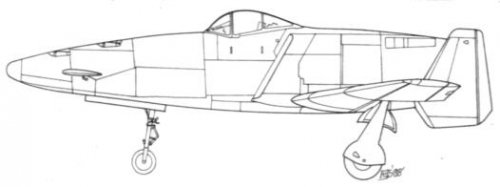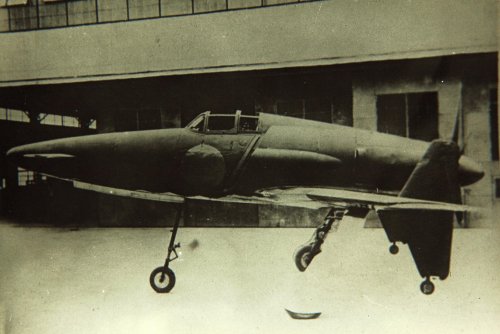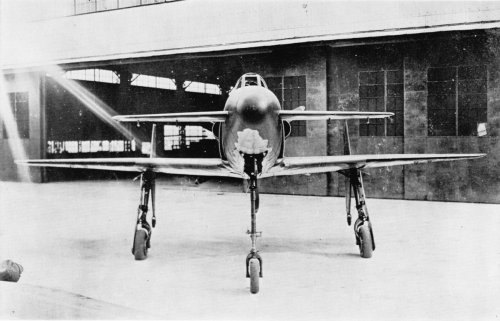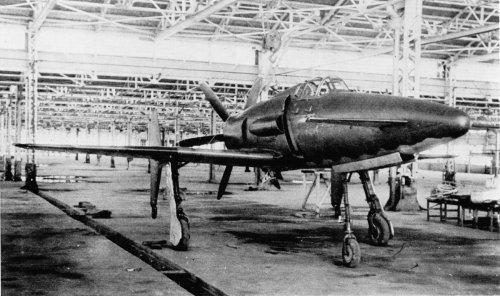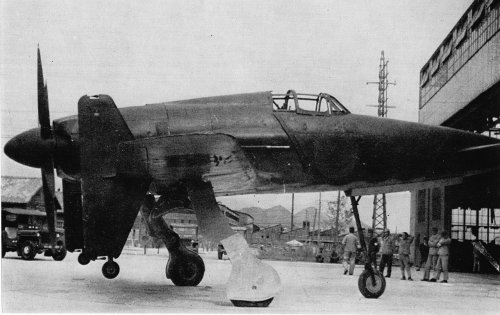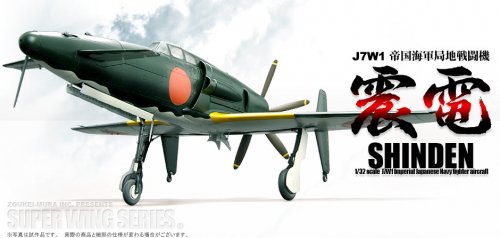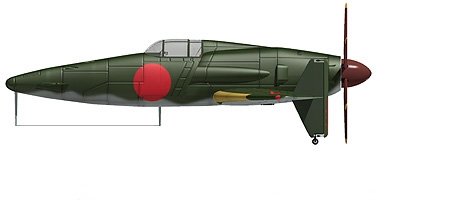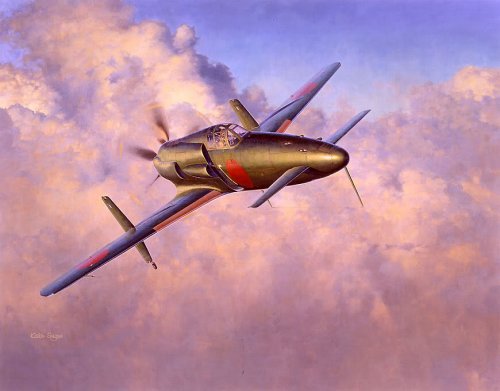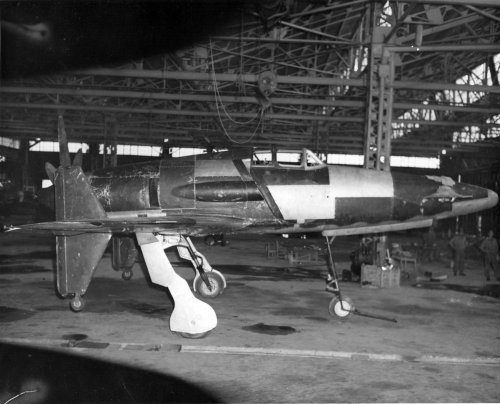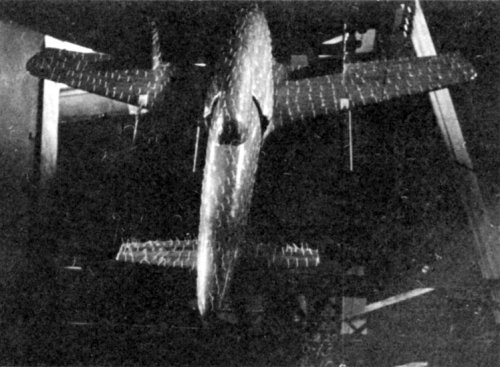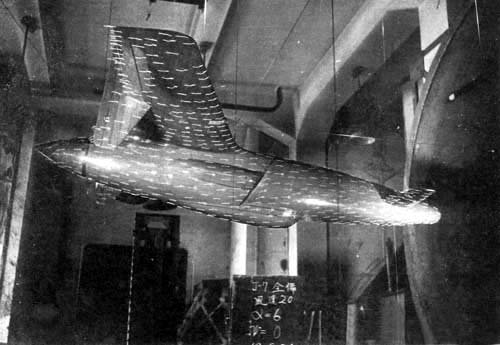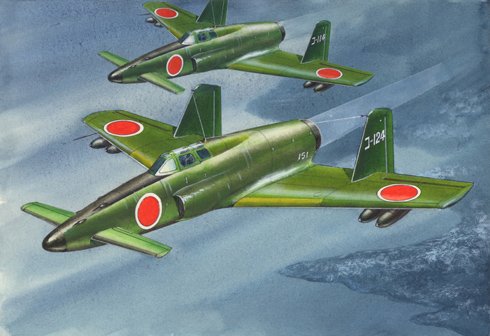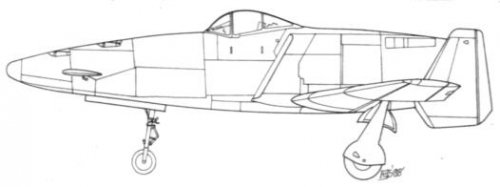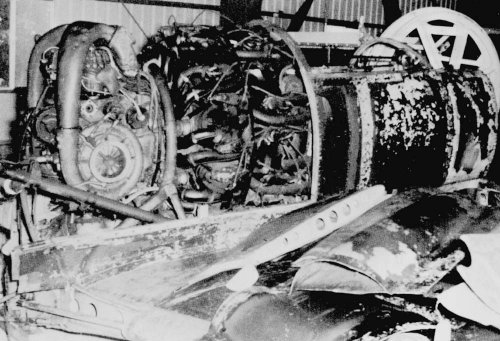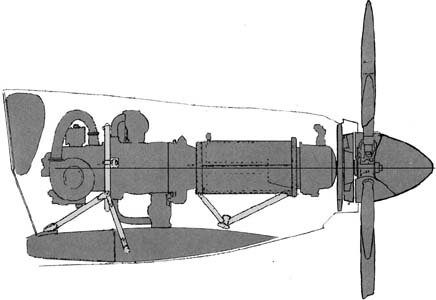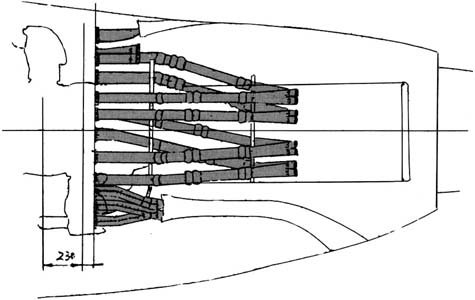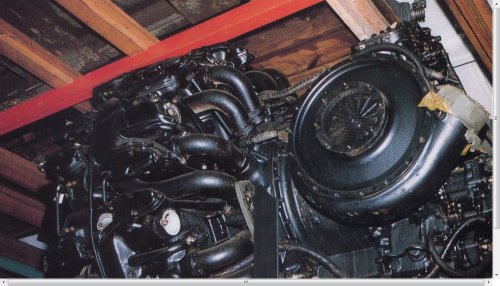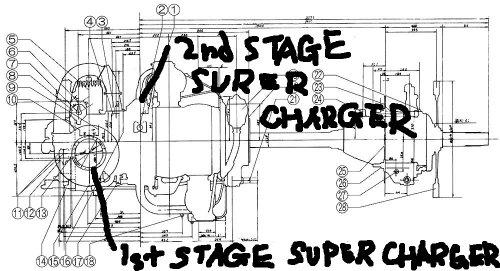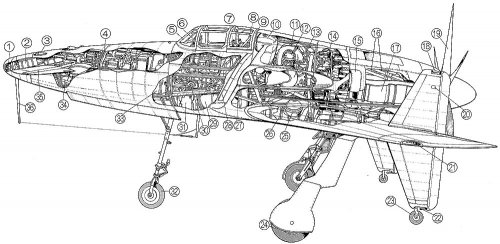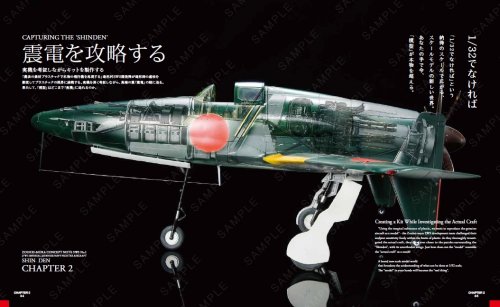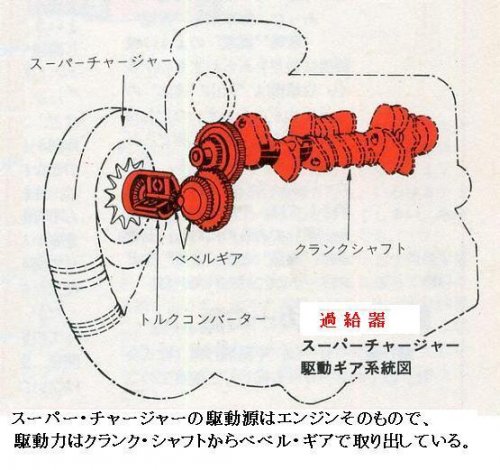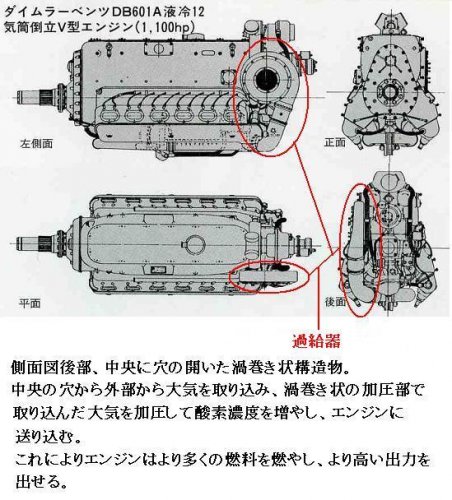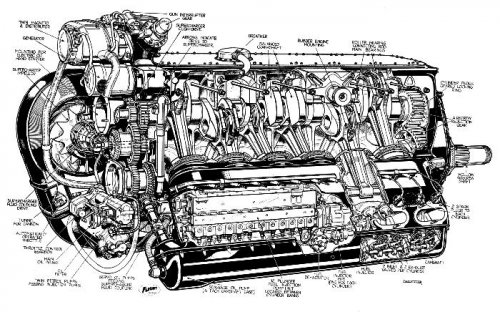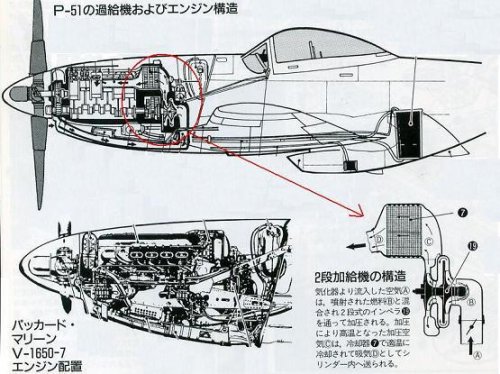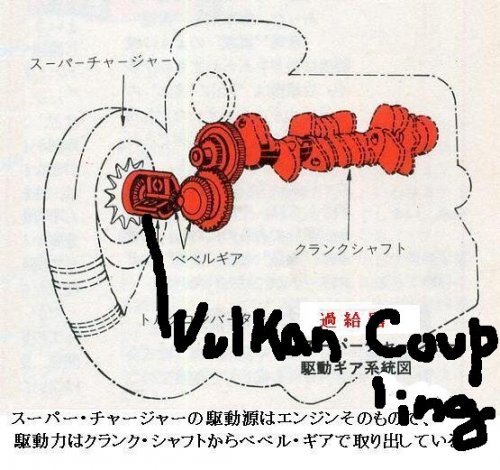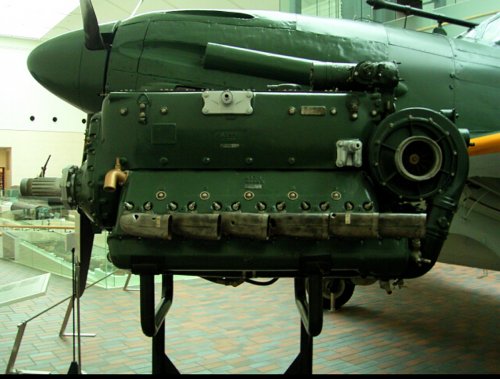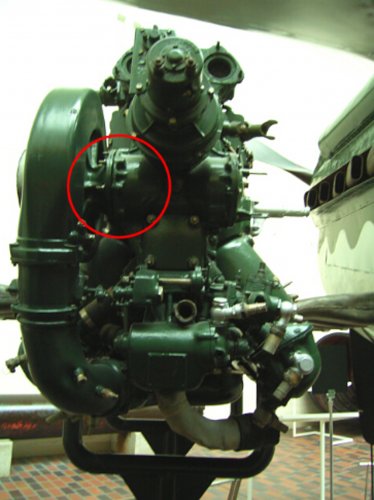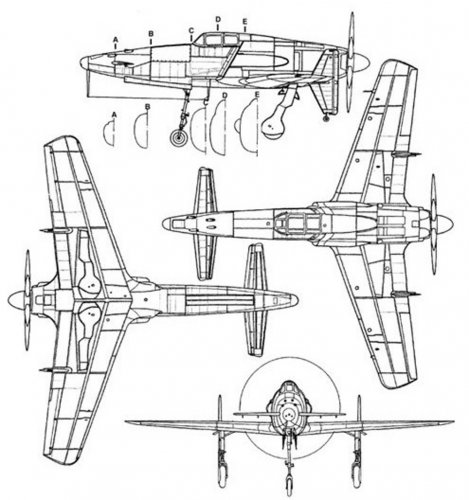You are using an out of date browser. It may not display this or other websites correctly.
You should upgrade or use an alternative browser.
You should upgrade or use an alternative browser.
Kyushu J7W1 Shinden/J7W2 Shinden-kai
- Thread starter hesham
- Start date
Tophe
ACCESS: Top Secret
I thought the jet J7W was an invention of Ted Nomura in the cartoon Luftwaffe-1946, in the late 1990s... are you sure your one is not a what-if? (as far as I am concerned, I don't care much, but I know many members here do care very much, rejecting anachronic dreams to focus on actual projects of the old years)...
J
joncarrfarrelly
Guest
Tophe said:I thought the jet J7W was an invention of Ted Nomura in the cartoon Luftwaffe-1946, in the late 1990s... are you sure your one is not a what-if? (as far as I am concerned, I don't care much, but I know many members here do care very much, rejecting anachronic dreams to focus on actual projects of the old years)...
Hi Tophe,
the J7W2 is mentioned in Francillon's 'Japanese Aircraft of the Pacific War', first published in 1970.
Francillon's book made extensive use of Japanese magazines from the 50s' and 60s, so it may be difficult to pinpoint when the J7W2 info was
first published.
The FAOW on the J7W published in 1978 also has info on the J7W2.
As Evan points out the more familiar renderings of the J7W2 show an aircraft much like the J7W1... no bubble canopy.
The bubble-canopy version strikes me as a rather 'Miranda-ish' creation.
Cheers, Jon
IIRC, Hasegawa released a model of the jet version, if that lends any amount of credibility.
joncarrfarrelly said:Tophe said:I thought the jet J7W was an invention of Ted Nomura in the cartoon Luftwaffe-1946, in the late 1990s... are you sure your one is not a what-if? (as far as I am concerned, I don't care much, but I know many members here do care very much, rejecting anachronic dreams to focus on actual projects of the old years)...
Hi Tophe,
the J7W2 is mentioned in Francillon's 'Japanese Aircraft of the Pacific War', first published in 1970.
Francillon's book made extensive use of Japanese magazines from the 50s' and 60s, so it may be difficult to pinpoint when the J7W2 info was
first published.
The FAOW on the J7W published in 1978 also has info on the J7W2.
As Evan points out the more familiar renderings of the J7W2 show an aircraft much like the J7W1... no bubble canopy.
The bubble-canopy version strikes me as a rather 'Miranda-ish' creation.
Cheers, Jon
Tophe
ACCESS: Top Secret
I thought the J7W2 actual project was a slightly different J7W1, propeller-driven, while the jet J7W (coded J7W2 or else) was a fake, or at least a simple idea never illustrated in archive sources.
- Joined
- 8 January 2006
- Messages
- 1,612
- Reaction score
- 762
Tophe said:I thought the J7W2 actual project was a slightly different J7W1, propeller-driven, while the jet J7W (coded J7W2 or else) was a fake, or at least a simple idea never illustrated in archive sources.
It was at least mentioned in Rene Francillion's book on Japanese aircraft and it's a straight-forward enough adaptation of the basic airframe. I can see a developed version with the cut down fuselage and clear canopy of late-model "Tony" variants.
Pelzig
ACCESS: Secret
- Joined
- 23 October 2008
- Messages
- 448
- Reaction score
- 82
According to my sources, the creator of the J7W Shinden, Captain Masaoki Tsuruno, envisioned his aircraft as using a turbojet from the outset. Of course, at the time, Japan had no such engine and thus, the Mitsubishi MK9D was used instead. However, his design work was done with a turbojet in mind so that when such a powerplant became available, the transition would not require significant changes. It is my opinion that the J7W2 would have simply been the J7W1 airframe with a turbojet installed. Perhaps an improved model might have the changes depicted in one of the illustrations here but that would have been down the road.
Tophe said:I thought the J7W2 actual project was a slightly different J7W1, propeller-driven, while the jet J7W (coded J7W2 or else) was a fake, or at least a simple idea never illustrated in archive sources.
blackkite
Don't laugh, don't cry, don't even curse, but.....
- Joined
- 31 May 2007
- Messages
- 8,819
- Reaction score
- 7,716
blackkite
Don't laugh, don't cry, don't even curse, but.....
- Joined
- 31 May 2007
- Messages
- 8,819
- Reaction score
- 7,716
blackkite
Don't laugh, don't cry, don't even curse, but.....
- Joined
- 31 May 2007
- Messages
- 8,819
- Reaction score
- 7,716
Hi!
http://www.watanabe1886.com/en/index.html
Sorry 'Kushu hikoki' is mistake. 'Kyushu hikoki' is correct.
http://www.watanabe1886.com/en/index.html
Sorry 'Kushu hikoki' is mistake. 'Kyushu hikoki' is correct.
Last edited:
Source:
http://w.livedoor.jp/harmony-gold_japan/lite/d/%BD%C5%C5%C4%20%B1%D1%B9%D4%20%A4%C8%20SWS
http://forum.worldofwarplanes.eu/index.php?/topic/486-kyushu-j7w1-shinden/
http://w.livedoor.jp/harmony-gold_japan/lite/d/%BD%C5%C5%C4%20%B1%D1%B9%D4%20%A4%C8%20SWS
http://forum.worldofwarplanes.eu/index.php?/topic/486-kyushu-j7w1-shinden/
Attachments
- Joined
- 25 June 2009
- Messages
- 14,753
- Reaction score
- 6,151
A few more pics:
Attachments
-
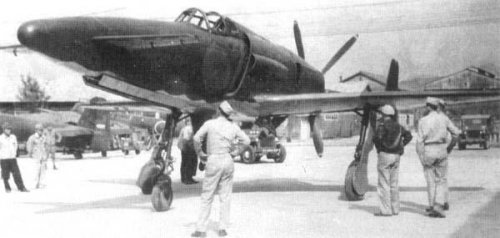 clippa-j7w5.jpg27.5 KB · Views: 362
clippa-j7w5.jpg27.5 KB · Views: 362 -
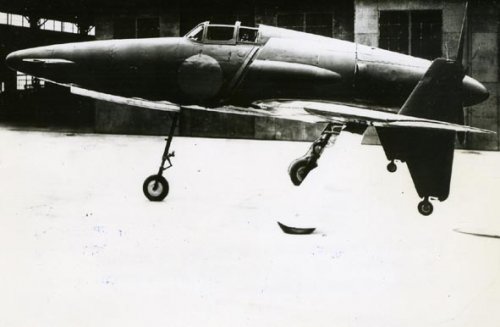 kyushu.j7w1.shinden.jpg29.9 KB · Views: 354
kyushu.j7w1.shinden.jpg29.9 KB · Views: 354 -
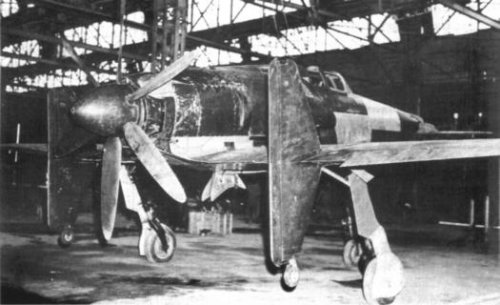 J7W1 Shinden_.jpg30.9 KB · Views: 406
J7W1 Shinden_.jpg30.9 KB · Views: 406 -
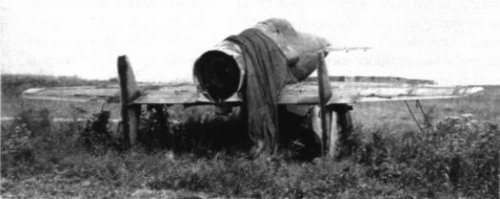 J7W1 Shinden-.jpg16.1 KB · Views: 440
J7W1 Shinden-.jpg16.1 KB · Views: 440 -
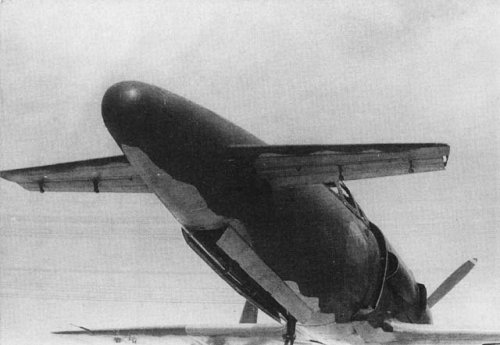 after14.jpg34.1 KB · Views: 435
after14.jpg34.1 KB · Views: 435 -
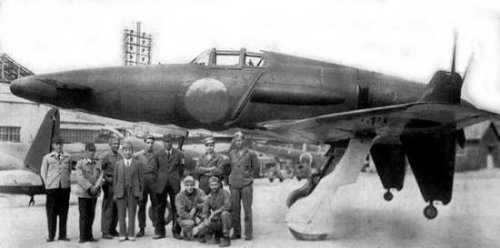 j7w-shinden-with-crew-posing.jpg23.6 KB · Views: 407
j7w-shinden-with-crew-posing.jpg23.6 KB · Views: 407 -
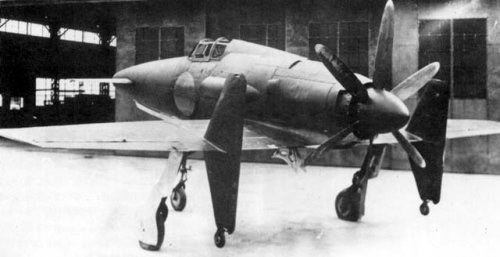 after19sf6.jpg28.3 KB · Views: 386
after19sf6.jpg28.3 KB · Views: 386 -
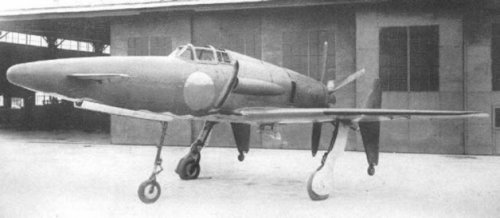 Shinden_3.jpg26.5 KB · Views: 370
Shinden_3.jpg26.5 KB · Views: 370
- Joined
- 25 June 2009
- Messages
- 14,753
- Reaction score
- 6,151
Some artwork (attachments #1-4) and two plans (attachments 5-6 in PDF):
Attachments
http://youtu.be/sphNVSkhmAQ
blackkite
Don't laugh, don't cry, don't even curse, but.....
- Joined
- 31 May 2007
- Messages
- 8,819
- Reaction score
- 7,716
blackkite
Don't laugh, don't cry, don't even curse, but.....
- Joined
- 31 May 2007
- Messages
- 8,819
- Reaction score
- 7,716
Hi! Shinden site.
http://www.geocities.jp/jp_j7w1_shinden/start-e.html
http://www.geocities.jp/jp_j7w1_shinden/start-e.html
Attachments
blackkite
Don't laugh, don't cry, don't even curse, but.....
- Joined
- 31 May 2007
- Messages
- 8,819
- Reaction score
- 7,716
Hi! Shinden flying model. Shinden's shape is no problem to fly. 
This model's landing gear have some troubles.
http://www.youtube.com/watch?feature=endscreen&NR=1&v=zZEaxlXtKGQ
This model's landing gear have some troubles.
http://www.youtube.com/watch?feature=endscreen&NR=1&v=zZEaxlXtKGQ
blackkite
Don't laugh, don't cry, don't even curse, but.....
- Joined
- 31 May 2007
- Messages
- 8,819
- Reaction score
- 7,716
blackkite
Don't laugh, don't cry, don't even curse, but.....
- Joined
- 31 May 2007
- Messages
- 8,819
- Reaction score
- 7,716
Hi! Shinden 1/32 scale model.
http://www.zoukeimura.co.jp/products/sws01_shinden_cl.html
And pictures.
http://flickrhivemind.net/Tags/j7w1,shinden/Interesting
http://www.zoukeimura.co.jp/products/sws01_shinden_cl.html
And pictures.
http://flickrhivemind.net/Tags/j7w1,shinden/Interesting
- Joined
- 25 June 2009
- Messages
- 14,753
- Reaction score
- 6,151
blackkite
Don't laugh, don't cry, don't even curse, but.....
- Joined
- 31 May 2007
- Messages
- 8,819
- Reaction score
- 7,716
Wow! Shinden-kai(震電改). 
Almost same name of Kawanishi shiden-kai(紫電改). ;D
The IJN used letter 電(den, electricity) for the interceptor for example 雷電(Raiden), 紫電(Shiden).
http://www.google.com/search?q=%E9%9C%87%E9%9B%BB%E6%94%B9&hl=ja&prmd=imvns&source=lnms&tbm=isch&sa=X&ei=JsdyUMasG8bNrQeI-oDYCQ&ved=0CAcQ_AUoAQ&biw=1366&bih=641
Almost same name of Kawanishi shiden-kai(紫電改). ;D
The IJN used letter 電(den, electricity) for the interceptor for example 雷電(Raiden), 紫電(Shiden).
http://www.google.com/search?q=%E9%9C%87%E9%9B%BB%E6%94%B9&hl=ja&prmd=imvns&source=lnms&tbm=isch&sa=X&ei=JsdyUMasG8bNrQeI-oDYCQ&ved=0CAcQ_AUoAQ&biw=1366&bih=641
blackkite
Don't laugh, don't cry, don't even curse, but.....
- Joined
- 31 May 2007
- Messages
- 8,819
- Reaction score
- 7,716
Hi! Another Shinden animation.
http://www.youtube.com/watch?v=mMomEL8h5_Q
http://www.youtube.com/watch?v=mMomEL8h5_Q
blackkite
Don't laugh, don't cry, don't even curse, but.....
- Joined
- 31 May 2007
- Messages
- 8,819
- Reaction score
- 7,716
And another RC Shinden movie.
http://www.youtube.com/watch?v=JEOOhyKDGAE
http://www.youtube.com/watch?v=JEOOhyKDGAE
blackkite
Don't laugh, don't cry, don't even curse, but.....
- Joined
- 31 May 2007
- Messages
- 8,819
- Reaction score
- 7,716
Shinden’s engine was Mitsubishi Ha43 type42(MK9D) forced air cooling 18cylinders radial engine with 2 stage 2 speed supercharger(two speed mechanical first stage+continuously variable speed second stage using hydraulic transmission(Vulkan coupling) or continuously variable speed first stage using hydraulic transmission(Vulkan coupling)+two speed mechanical second stage)(sorry I'm not sure. But I think perhaps later.), extended propeller shaft and methanol injection.(instead of intercooler)
By this engine, Shinden got large climb rate and high altitude performance. (Mitsubishi Senden and kawanishi 17-shi fighter were planned to use almost same engine.HA43(-41) with Vulkan coupling, but it's reliability was poor.)
Bore : 140mm, Stroke : 150mm, Displacement : 41.55L, Diameter : 1230mm, Take off power : 2030hp(2900rpm), 1860hp(2000m/2800rpm), 1600hp(8400m/2800rpm)
Estimated Shinden's performance
Maximum speed : over 741km/h(8700m), Climb time to 10000m : less than 10.5 minutes, Service ceiling : over 12000m
By this engine, Shinden got large climb rate and high altitude performance. (Mitsubishi Senden and kawanishi 17-shi fighter were planned to use almost same engine.HA43(-41) with Vulkan coupling, but it's reliability was poor.)
Bore : 140mm, Stroke : 150mm, Displacement : 41.55L, Diameter : 1230mm, Take off power : 2030hp(2900rpm), 1860hp(2000m/2800rpm), 1600hp(8400m/2800rpm)
Estimated Shinden's performance
Maximum speed : over 741km/h(8700m), Climb time to 10000m : less than 10.5 minutes, Service ceiling : over 12000m
Attachments
blackkite
Don't laugh, don't cry, don't even curse, but.....
- Joined
- 31 May 2007
- Messages
- 8,819
- Reaction score
- 7,716
|
Attachments
blackkite
Don't laugh, don't cry, don't even curse, but.....
- Joined
- 31 May 2007
- Messages
- 8,819
- Reaction score
- 7,716
Attachments
blackkite
Don't laugh, don't cry, don't even curse, but.....
- Joined
- 31 May 2007
- Messages
- 8,819
- Reaction score
- 7,716
German DB601N engine had a single stage continuously variable speed supercharger. Basically it's supercharger was 2 speed but between first speed and second speed were continuously variable speed using Vulkan coupling.
トルクコンバーター = Vulkan coupling
While V-1650(Rolls-Royce Merlin) engine had 2 stage 2 speed mechanical supercharger with inter cooler.
トルクコンバーター = Vulkan coupling
While V-1650(Rolls-Royce Merlin) engine had 2 stage 2 speed mechanical supercharger with inter cooler.
Attachments
blackkite
Don't laugh, don't cry, don't even curse, but.....
- Joined
- 31 May 2007
- Messages
- 8,819
- Reaction score
- 7,716
Shinden shape merits
1. When climb, fore wing generate lift while normal shape's tail wing generate inverse lift.
It's possible to design low drag light weight smaller main wing.
2. Low drag because main wing and fuselage are not exposed high speed propeller after stream.
3. Almost fuselage is full of equipments compared with normal shape, it's possible to design
smaller fuselage.(Fuselage shape especielly nose is clean,low drag.)
4. Good forward view.
5.It's possible to concentrate all armaments in effective nose part.
6.Stall characteristic is good.(Stall begin from fore wing and when stall begin, nose down naturally.)
7. Propeller efficiency is good.
8. It's easy to install jet engine. (I think that Shinden is an distant ancestor of Typhoon, Gripen and Rafale.)
(It has potential to realize high speed, high altitude, agile and heavy armament interceptor.)
9. Good under view.
10. Engine guard pilot when receive attach from behind.
Shinden shape demerits
1.Take off and landing speed is high and need long runway because main wing is not exposed
high speed propeller after stream.
2. It's difficult to use high efficiency large diameter propeller.
3. In case of air cooling engine, it's hard to cool engine.
4. In case of escape, pilot is dangerous.
5. It's impossible to discharge spent cases of 30mm cannon from the aircraft which destroy
propeller.
6. Pitch and yaw stability is weak.
7. Elevator is sensitive.
8. Rudder response is poor.
9. Nose gear is long and weak.
10. Extended propeller shaft vibration.
11. Need counter measures for propeller torque.
12. It has weight increase possibility.(Long nose gear, extended propeller shaft,etc)
13.Very cold in winter or high altitude flight, because engine locate behind the pilot.
14. Engine hit the pilot when crush landing.
Shinden's armaments were 4×30mm 17-shi(5-shiki) cannon which had 60 warhead each.
Length : 2218mm, Weight : 80kg, Warhead initial speed : 750m/s, shooting speed : 350/minutes,
Case weight : 650g, Warhead weight : 350g, Explosive weight : 37g.
No2 and No3 Shinden were under construction at the end of the war.
Shinden No3 to No5's engine were power increased Mitsubishi HA43-43 engine which have different first stage supercharger(Single supercharger which avoid HA43-42's left side supercharger.)
From No8 Shinden, HA43-44 engine(single stage 3 speed mechanical supercharger) was planned to use, because Vukan coupling was hard to manufacture and use in Japan at the day. (Vulkan coupling was also used for Hien's HA40(DFB601) engine).
Shinden mass production model were planned to use wide and simple 4 blades propeller.
1. When climb, fore wing generate lift while normal shape's tail wing generate inverse lift.
It's possible to design low drag light weight smaller main wing.
2. Low drag because main wing and fuselage are not exposed high speed propeller after stream.
3. Almost fuselage is full of equipments compared with normal shape, it's possible to design
smaller fuselage.(Fuselage shape especielly nose is clean,low drag.)
4. Good forward view.
5.It's possible to concentrate all armaments in effective nose part.
6.Stall characteristic is good.(Stall begin from fore wing and when stall begin, nose down naturally.)
7. Propeller efficiency is good.
8. It's easy to install jet engine. (I think that Shinden is an distant ancestor of Typhoon, Gripen and Rafale.)
(It has potential to realize high speed, high altitude, agile and heavy armament interceptor.)
9. Good under view.
10. Engine guard pilot when receive attach from behind.
Shinden shape demerits
1.Take off and landing speed is high and need long runway because main wing is not exposed
high speed propeller after stream.
2. It's difficult to use high efficiency large diameter propeller.
3. In case of air cooling engine, it's hard to cool engine.
4. In case of escape, pilot is dangerous.
5. It's impossible to discharge spent cases of 30mm cannon from the aircraft which destroy
propeller.
6. Pitch and yaw stability is weak.
7. Elevator is sensitive.
8. Rudder response is poor.
9. Nose gear is long and weak.
10. Extended propeller shaft vibration.
11. Need counter measures for propeller torque.
12. It has weight increase possibility.(Long nose gear, extended propeller shaft,etc)
13.Very cold in winter or high altitude flight, because engine locate behind the pilot.
14. Engine hit the pilot when crush landing.
Shinden's armaments were 4×30mm 17-shi(5-shiki) cannon which had 60 warhead each.
Length : 2218mm, Weight : 80kg, Warhead initial speed : 750m/s, shooting speed : 350/minutes,
Case weight : 650g, Warhead weight : 350g, Explosive weight : 37g.
No2 and No3 Shinden were under construction at the end of the war.
Shinden No3 to No5's engine were power increased Mitsubishi HA43-43 engine which have different first stage supercharger(Single supercharger which avoid HA43-42's left side supercharger.)
From No8 Shinden, HA43-44 engine(single stage 3 speed mechanical supercharger) was planned to use, because Vukan coupling was hard to manufacture and use in Japan at the day. (Vulkan coupling was also used for Hien's HA40(DFB601) engine).
Shinden mass production model were planned to use wide and simple 4 blades propeller.
windswords
ACCESS: Secret
- Joined
- 19 May 2009
- Messages
- 389
- Reaction score
- 217
I did not know the production version was to have a 4 blade propeller. I really like the 6 bladed prop, very cool!  the Ki-93 also had 6 blade props as did the prototype Ki-94-II. You have to wonder at what point is more propeller blades overkill though. The 5 blade prop was used in versions of the Spitfire so maybe 5 is the practical and useful limit. Maybe someone with an engineering background could shed some light on this...
the Ki-93 also had 6 blade props as did the prototype Ki-94-II. You have to wonder at what point is more propeller blades overkill though. The 5 blade prop was used in versions of the Spitfire so maybe 5 is the practical and useful limit. Maybe someone with an engineering background could shed some light on this...
Blackkite, do you know if the production Shinden with the 4 blade prop was to be the same diameter as the prototype's 6 blade?
Blackkite, do you know if the production Shinden with the 4 blade prop was to be the same diameter as the prototype's 6 blade?
blackkite
Don't laugh, don't cry, don't even curse, but.....
- Joined
- 31 May 2007
- Messages
- 8,819
- Reaction score
- 7,716
windswords said:Blackkite, do you know if the production Shinden with the 4 blade prop was to be the same diameter as the prototype's 6 blade?
Yes it is. 4 blades propeller's diameter was 3.4m same as 6 blades propeller.
Area of each blades of 4 blades propeller is 50% larger than 6 blades propeller.
Variable pitch mechanism of 6 blades propeller is too complex for mass production Shinden.
Another disadvantage of the Shinden was the huge torque of the single propeller which couldn't be corrected via rudder like in normal front propeller aircrafts. The solution - although mechanically more complex - would have been a contra-rotating prop which also would have allowed a smaller prop diameter for the same engine power.
blackkite
Don't laugh, don't cry, don't even curse, but.....
- Joined
- 31 May 2007
- Messages
- 8,819
- Reaction score
- 7,716
Hi Basil! You are right. 
When Shinden's first flight, she inclined 10 degree when climb.
But contrary rotating propeller was too complicated, too.
The IJN and Kyushu aircraft gave up to use this mechanism and try to apply another solution.
The tests showed that the biggest problem was the pull to the right on the fuselage caused by the
large torque. Various counter-measure were applied; for example, the attachment angle of the
front wings was raised 3 degrees, and as the tendency was strongest at low gear and when the
flaps were down, the lowered flap angle was raised 35 degrees. And so for the time being, steps
had been taken to fix the problem.
When Shinden's first flight, she inclined 10 degree when climb.
But contrary rotating propeller was too complicated, too.
The IJN and Kyushu aircraft gave up to use this mechanism and try to apply another solution.
The tests showed that the biggest problem was the pull to the right on the fuselage caused by the
large torque. Various counter-measure were applied; for example, the attachment angle of the
front wings was raised 3 degrees, and as the tendency was strongest at low gear and when the
flaps were down, the lowered flap angle was raised 35 degrees. And so for the time being, steps
had been taken to fix the problem.
Attachments
blackkite
Don't laugh, don't cry, don't even curse, but.....
- Joined
- 31 May 2007
- Messages
- 8,819
- Reaction score
- 7,716
Yes for example Kyofu prototype, Fugaku, etc. But they had tractor configuration.
Later Kyofu became simple propeller and Nakajima studied single propeller Fugaku.
I think Shinden with contra-rotating propeller is very exciting, too.
We hope Shinden restoration in the U.S.Washington D.C. B)
http://airandspace.si.edu/collections/artifact.cfm?id=A19600333000
Later Kyofu became simple propeller and Nakajima studied single propeller Fugaku.
I think Shinden with contra-rotating propeller is very exciting, too.
We hope Shinden restoration in the U.S.Washington D.C. B)
http://airandspace.si.edu/collections/artifact.cfm?id=A19600333000
Similar threads
-
-
-
Yokosuka (Yokosho/Yosho, Kugisho/Kusho) related topics on this forum
- Started by Stargazer
- Replies: 0
-
-
IJN Specification 12-Shi (E12/E13, Reconnaissance Seaplane, 1937)
- Started by blackkite
- Replies: 25

